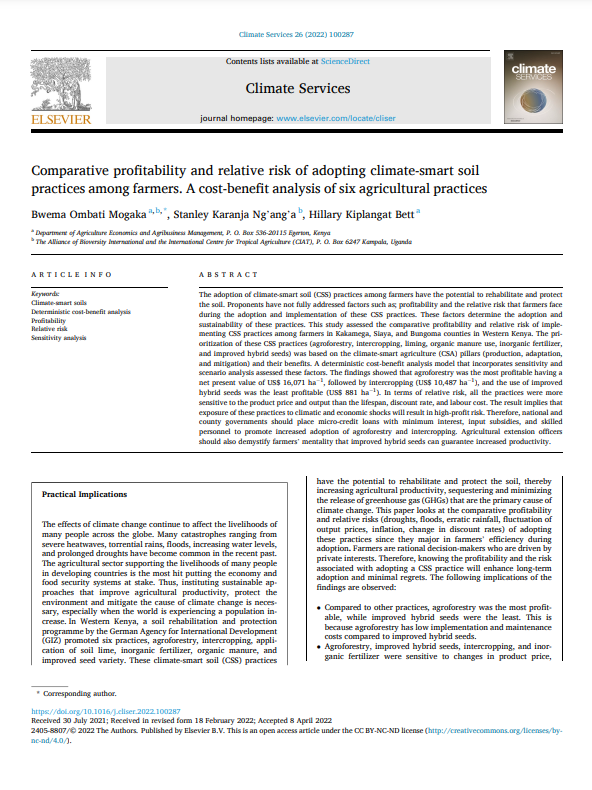The adoption of climate-smart soil (CSS) practices among farmers have the potential to rehabilitate and protect the soil. Proponents have not fully addressed factors such as; profitability and the relative risk that farmers face during the adoption and implementation of these CSS practices. These factors determine the adoption and sustainability of these practices.
This study assessed the comparative profitability and relative risk of implementing CSS practices among farmers in Kakamega, Siaya, and Bungoma counties in Western Kenya. The prioritization of these CSS practices (agroforestry, intercropping, liming, organic manure use, inorganic fertilizer, and improved hybrid seeds) was based on the climate-smart agriculture (CSA) pillars (production, adaptation, and mitigation) and their benefits.
A deterministic cost-benefit analysis model that incorporates sensitivity and scenario analysis assessed these factors. The findings showed that agroforestry was the most profitable having a net present value of US$ 16,071 ha−1, followed by intercropping (US$ 10,487 ha−1), and the use of improved hybrid seeds was the least profitable (US$ 881 ha−1). In terms of relative risk, all the practices were more sensitive to the product price and output than the lifespan, discount rate, and labour cost.
The result implies that exposure of these practices to climatic and economic shocks will result in high-profit risk. Therefore, national and county governments should place micro-credit loans with minimum interest, input subsidies, and skilled personnel to promote increased adoption of agroforestry and intercropping. Agricultural extension officers should also demystify farmers’ mentality that improved hybrid seeds can guarantee increased productivity.
Mogaka, Bwema Ombati; Karanja, Stanley Ng’ang’a; Bett, Hillary Kiplangat.

